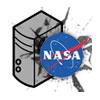Waledac: March, 2010
Though not nearly as large or important a botnet, Waledac – which counted fewer than 100,000 infected hosts at its height – was notable for the tactics that researchers used to dismantle the botnet. Microsoft worked with a group of researchers at the University of Mannheim, the University of Vienna and elsewhere to identify the key command and control servers, analyze the botnets peer-to-peer communication protocol and work out a plan for putting Waledac down in one fell swoop.









